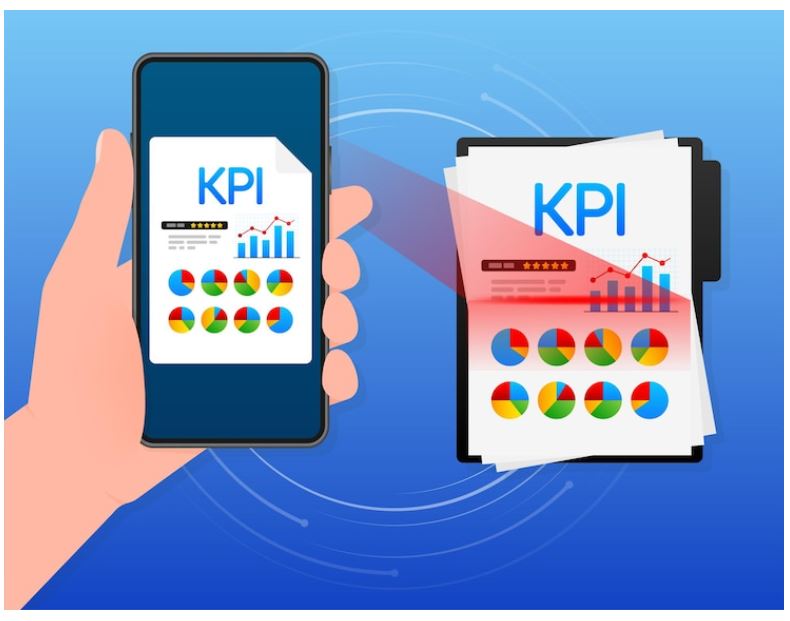Product metrics are the key performance indicators (KPIs) or data points that best describe your product. Tracking your digital product’s performance will help you figure out what works and what doesn’t, which in turn will help you make smarter decisions on how to improve it.
Keep reading to learn more about product metrics and the critical metrics to track.

Picture Credits – Freepik
What Exactly is a Product Metric?
A product metric is a measurable and quantifiable characteristic of the product. Product metrics are the key to understanding what is happening in your product. They help you understand how much time people spend on your product, how often they use it, what parts of the product they use most, and so on.
The metrics you collect tell you a lot about your customer’s behaviour and preferences. This information will help you improve your product and make it more user-friendly. Metrics also allow you to see which aspects of the product are working well and which need improvement.

Picture Credits – Freepik
Five Critical Reasons To Track Your Digital Product’s Performance
Tracking your digital product’s performance is crucial to understand if it is delivering its goal. This means you need to know what people are saying about it, the number of people who have engaged with it, how many of them have converted into customers, and so on. Here are the top five reasons to track your digital product’s performance:
- To identify the strengths and weaknesses of your digital product.
- To better understand the customer experience.
- To improve your digital product’s performance.
- To improve your sales conversion rate by understanding how to market your product better.
- To be on top of your product’s ROI and make informed decisions on what to retain and remove.
As you might know, it is not just enough to build a digital product and hope that it works. Many factors can affect its success, including the quality of the design, the features offered, and how well it is marketed. So, Tracking your digital product’s performance is vital.
In order to track how well your digital product, such as an app or website, is doing, you need a set of quantitative entities to analyze them. Product metrics will come in handy for this sole purpose. Using the insights gained from the product metrics data, you can not only see the performance of your digital product but also understand which part of it is working well and which is not. From a sales aspect, this information is crucial for the success of your business.
What are the key product metrics to track?
Numerous product metrics track information on how well a product is performing. Among those, the following are some of the most important:
User engagement
Measures how much time users spend on your site and what kind of content they view.
Conversion rate
Measures the percentage of visitors who complete the desired action, such as signing up for your newsletter or purchasing a product.
Revenue per customer
Measures how much money you make per customer, which is calculated by dividing total revenue by total customers.
User Acquisition Cost (UAC)
The cost to acquire a customer
Churn Rate
The percentage of customers who stop using the product in a given time frame
Retention Rate
The percentage of customers who continue to use the product in a given time frame
Gross Margin
The percentage of profit from sales. It measures the amount of revenue that remains after subtracting costs directly associated with production.
Cost per acquisition (CPA)
The cost per acquisition (CPA) reflects how much it costs to move a single consumer through your sales funnel, from initial contact to final conversion.
Cost per lead (CPL)
The cost per lead (CPL) measures how much it costs to produce a fresh lead for your sales department from an ongoing marketing campaign.
Monthly active users (MAU)
The number of unique users who visited a website within the previous month is measured by the monthly active users (MAU), a key performance indicator (KPI) used by social networking and other businesses. Websites typically utilize an identifying number, email address, or username to identify monthly active users.
Average revenue per user (ARPU)
The term “average revenue per user” (ARPU), sometimes known as “average revenue per unit,” refers to the total income divided by the number of subscribers in the case of consumer communications, digital media, and networking companies.
Average order value (AOV)
The average dollar amount spent per order placed on a website or mobile app is tracked by the average order value (AOV).
Customer lifetime value (CLV)
Customer lifetime value (CLV) is a metric used to describe how much money a company can expect from a typical customer overall during the duration that person or account stays a customer.
Net Promoter Score (NPS)
Net promoter score (NPS) is a popular market research metric based on a single survey question asking respondents to rate their likelihood of recommending a company, product, or service to a friend or colleague.
Bounce Rate
The percentage of website visitors that exit without clicking a link, completing a form, or making a transaction is known as the “bounce rate.”

Picture Credits – Freepik
Wrapping Up…
Product metrics are used to measure the success of a product. It is vital to track these metrics so that you know where your product stands in the market and what you need to do next in order to improve it.
Have you ever wanted to grow your business but found it hard to track the various metrics? Siam Computing delivers a state-of-the-art service that provides data from multiple sources onto one page.
What are you waiting for? Reach out to us and increase your business dynamically!








